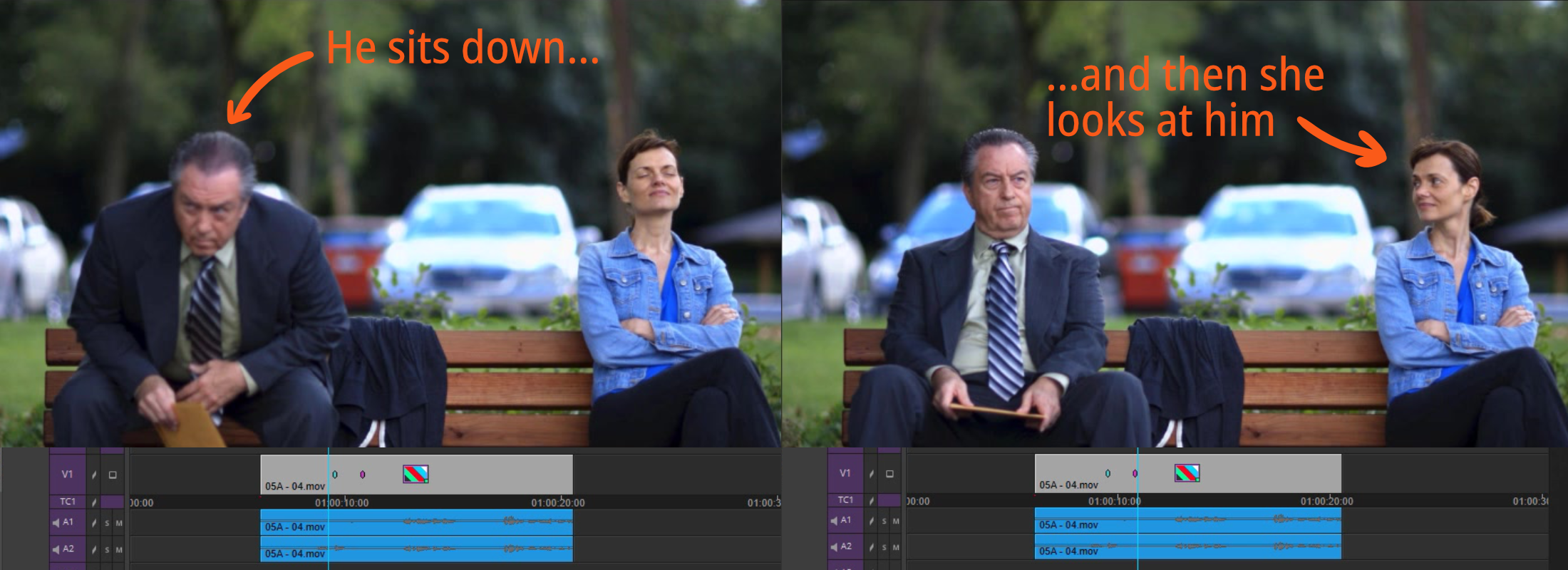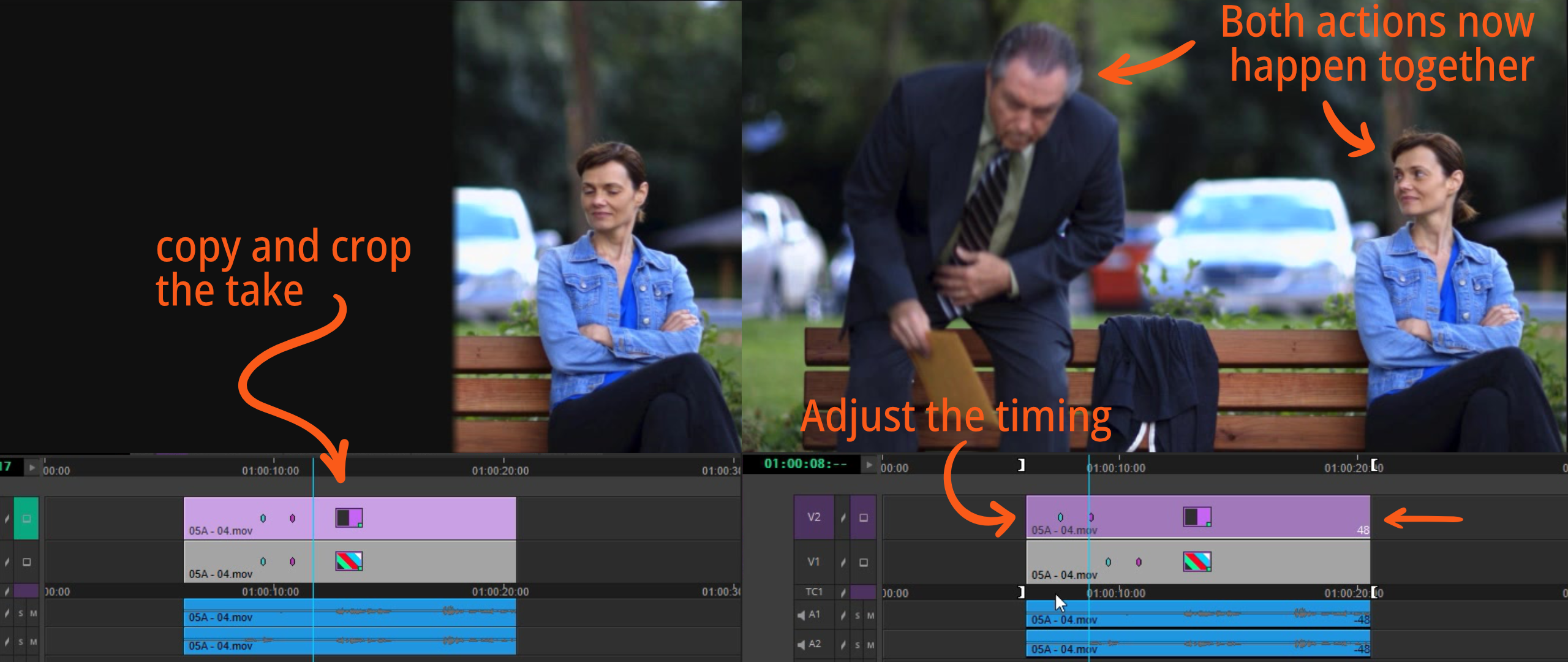So, you’ve found your first client, congratulations! After all that hard work and grind, someone…

How to FINALLY Make Actors Do What You Want – With Editing
When you’re editing, most of the time you’re going to be re-timing or repositioning entire shots – the length in one shot, shortening another, or moving something around. But occasionally, you’ll need to re-time the action that occurs within the frame itself, whether it’s how two characters interact with each other, or the movement of some object on the screen. Read on to learn how.
Using a Split Screen
Consider a shot here from the short film ‘Fingerprints’. In it, we’ve got a woman sitting on a bench, and a man walks up from behind the bench and sits down. She was supposed to notice him as he sits, but the actress’s reaction was slightly delayed.

Now you could look through other takes and hope that you get the reaction timed to just the way you want. But let’s say for the sake of example, that the timing is just a bit off in every single take. So normally, you’d be left with two options:
- Pick whichever one is the closest and then hope nobody notices – not a great choice
- Try to re-shoot the scene – expensive and not likely to happen a lot of the time
Well, there’s a third option, and that is to re-time the interaction of the two characters by using a split screen effect. So in our NLE software, if you create a copy of the shot on the track above, you can essentially crop out the left side of the image featuring the man. Knowing that the man sits down right at the blue marker, and the woman starts her look over here at the pink marker, you can simply move her shot earlier, adjusting the timing the way you want it. So now when we play the clip back, the woman will notice the man as he sits down. This is a pretty powerful technique to fix otherwise unfixable problems with actor performance and timing.
As a second example of how you might use this technique, a bit later in the scene the man is speaking to the woman in Russian, and things are getting a little bit heated. The woman retorts back abruptly in Russian as well, but there’s a small delay between the man finishing speaking and the woman’s retort. It might be a stronger moment and emphasize her character’s response if she cut him off a bit and talked over him, so you can make that happen with the split-screen technique as well as shown in the image below. Now it seems like she’s interrupting him.

Wrap Up
Now in this rather basic split screen scenario, the camera was locked off or stationary, and there wasn’t too much movement going on in the background behind the characters. Additionally, each character stayed completely on their side of the screen, their arms did not cross over onto the other person, and they didn’t cast any shadows on each other. This type of situation makes it really easy to re-time a scene with a split screen effect like this.
As I’m sure you can imagine though, if it wasn’t such an ideal scenario, even with a slightly moving camera, things are gonna get a lot harder. That’s where motion tracking and some other tricks become useful, but that’s going to be a lesson for another day.
For more tutorials about creative editing in general be sure to visit our training page. There, you can sign up for hours of free sample videos and more information about our full courses.
Leave Your Thoughts & Comments Below:



